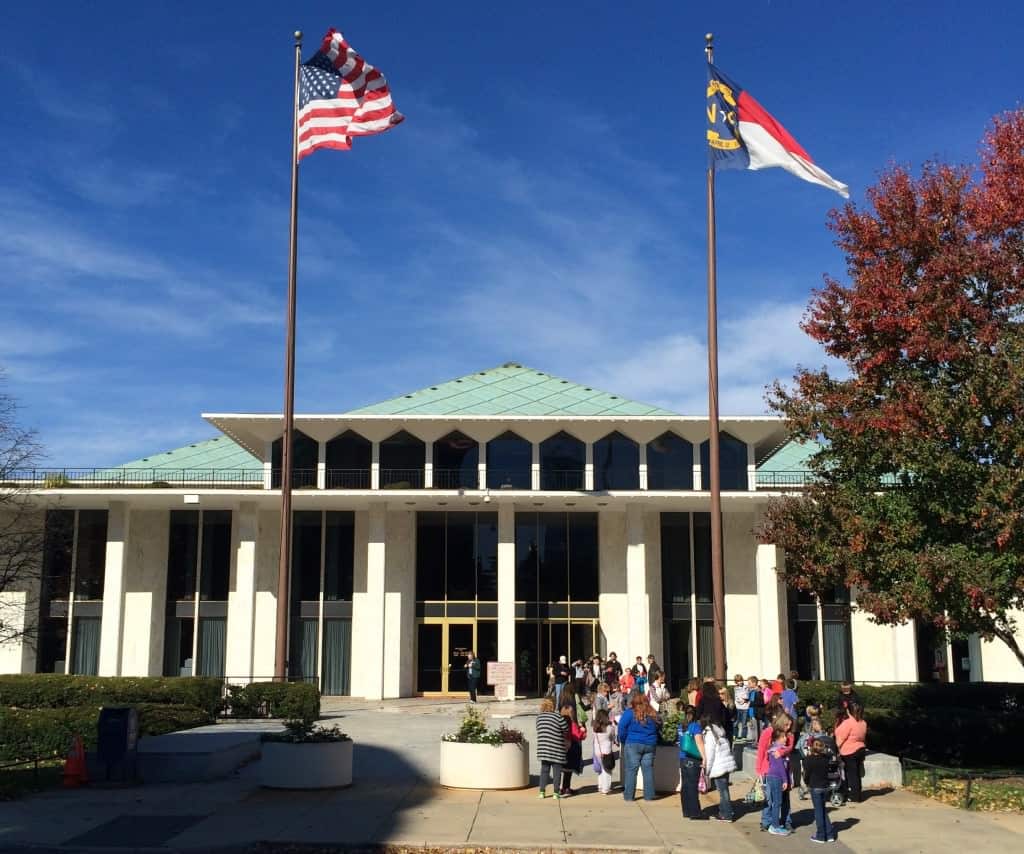

In a bid toward fairness, proponents of a bill that would funnel more tax and grant dollars to charter schools say that funds spent on each child’s public schooling should stay with that child— wherever she attends school.
“The money should follow the child,” said Sen. Chad Barefoot, talking about one provision of a House bill he presented to Senate Finance members on Monday afternoon that previously dealt with school playgrounds—but was gutted and jammed with language that would change the way charter schools receive money by allowing them to receive millions more in sales taxes, property taxes, grant funds, and federal appropriations, and more.
But Onslow County Public Schools’ chief financial officer, Jeff Hollamon, said the funding mechanisms for charter and public schools already in place guarantees that charter schools receive their fair share of funds. The latest proposal, penned by charter school advocate Sen. Jerry Tillman (R-Randolph), would disrupt that funding relationship and would actually give charter schools an unfairly larger slice of the pie, said Hollamon.
“The state already fairly divvies up per pupil funding between charter schools and local public schools,” said Holloman. “But this proposal attempts to go beyond that, giving charter schools additional funds to which they are not entitled.”
Federal appropriations for programs that charters don’t provide, indirect cost reimbursements for school lunches that charters don’t offer, and grant awards specifically targeted toward traditional public schools that support innovative methods to boost student achievement could all be up for grabs by charter schools.
“Now charter schools are looking at receiving beyond their fair share,” said Hollamon.
Paying charter schools for services they don’t provide
Charter schools are public, but they aren’t quite held to the same standards as regular public schools.
No more than 50 percent of their teachers have to be licensed, for example. They have greater autonomy when it comes to their curricula.
And they don’t have to provide lunch, either—but with Sen. Tillman’s proposal contained in the gutted HB 539, they would be able to receive funds related to supporting the federally-backed school lunch program anyway.
Onslow County’s CFO Hollamon explained that the local school district uses its own fair share of per pupil funds — that was divvied up and distributed to the district after charter schools also got their fair share from the state — to support the indirect costs associated with administering the federal school lunch program.
“The LEA pays for services related to utility costs, custodial costs, maintenance support, IT, etc,” said Hollamon. “The district is using its own money to pay those indirect costs after the per pupil funding has already been distributed. So receiving reimbursements for these indirect costs is a way to recoup some of those expenses that the LEA has paid for with its own share of state money.”
“But then these indirect cost reimbursements must be shared with charter schools that didn’t provide any of those services in the first place,” Hollamon said of the proposal.
Hollamon says that’s not fair—and it’s not the only example of a situation where traditional public schools would have to lose out on funds that they use toward supporting critical services.
“A school district sometimes uses its schools to serve as hurricane shelters for communities. They may get federal reimbursements for providing those shelters, or they could get reimbursements from a private group like the Red Cross, or the county,” said Hollamon.
“Either way, when they do get that reimbursement, that would have to be shared with charter schools even though they didn’t bear any of those costs.”
That would happen thanks to a provision in the bill that would require local school districts to share “fees for actual costs” with charter schools. And another example of a situation where, thanks to that provision, local public schools would lose out on badly needed funds?
Driver’s education
“In the Charlotte-Mecklenburg school district, kids pay a fee for driver’s ed,” explained Charlotte-Mecklenburg school board vice chair Tim Morgan.
The state limits the amount a school district can charge for driver’s education to $65 to offset additional cost of the program beyond what the state subsidizes. The state’s support of the program nearly vanished this year, but last minute dealings during the state budget process saved school districts from being on the hook for the full cost of driver’s ed.
But with the latest proposal, Morgan says “we will have to take a chunk of that fee and send it to charter schools—even if they don’t provide driver’s ed?”
Morgan says that provision will also pertain to sports programs and any scenario where local public schools provide services for which they charge fees to support the programs’ administration. In each case, charter schools will share in those fees, even if they don’t provide the services.
Local public schools seeking grant funds must share those too
CMS’ Tim Morgan spoke proudly of the district’s Project L.I.F.T. program, a public-private partnership for which the business community granted CMS $50 million over five years to develop innovative instructional methods and provide wraparound services for at-risk youth at West Charlotte High School and its feeder elementary and middle schools.
It’s a program, said Morgan, that aims to boost high school graduation rates. It required the General Assembly’s support, and it was made possible thanks to special legislation.
But with the passage of HB 539, those public schools for which the Project L.I.F.T. grant is intended would have to share their grant awards with charter schools that don’t participate in those efforts.
“We would have to make sure that every single donor commits to only those dollars being spent to Project L.I.F.T.,” said Morgan.
So how hard can it be to make that designation while making a grant? Harder than it may appear, according to Morgan.
“It will force the creation of an additional accounting mechanism for all programs in order to ensure that this additional piece of paper is signed. It’s one more government regulation that has to be added to these processes,” Morgan said.
That’s a sentiment that was echoed by Guilford County Schools’ chief of staff Nora Carr back in May, when she spoke with N.C. Policy Watch about the legislation’s potential impact when it was part of a previous bill that stalled in the House. New accounting mechanisms, said Carr, place more stress on school finance offices that are already understaffed thanks to persistent state disinvestment in public schools.
Carr also explained that local school districts aggressively engage in competitive grant programs because in a time of austerity, it’s imperative they find other revenue streams to support the needs of their traditional public schools.
“Most of these competitive grants are for a specific purpose to be carried out at our traditional schools,” said Carr, noting that the grants also include monies for indirect costs that are incurred while carrying out the grant-funded program’s purpose.
But this legislation to change how charter schools receive funds, “the charter schools would get a percentage of the indirect costs that we sought for in the competitive grant process,” said Carr. “How is that fair?”
And grant funds, fees, federal appropriations and indirect cost reimbursements aren’t the only additional funding streams up for grabs — sales and property taxes are, too.
The proposed charter school funding change would no longer allow for the practice of some districts keeping supplemental property taxes or sales tax revenue that’s distributed using the ad valorem method for traditional public schools within their own taxing jurisdiction. Instead, those funds could follow a child to a charter school elsewhere in the state.
More questions than answers
CMS’ Morgan says what he takes away from this late-game proposal to divert more funds away from local public schools and into the coffers of charter schools is that all of this raises a lot of questions and uncertainties.
“We have been involved in a number of litigations with charter schools over funding issues,” said Morgan. “We think we are finally at a good point in our funding relationship with charter schools, and then this proposal could now raise the possibility of more litigation.”
Onslow County’s Hollamon feels similarly.
“The bill’s language is confusing,” said Hollamon, who pointed out several provisions within the legislation that contradict one another, like how funds for pre-kindergarten should be excluded from having to be shared with charters, yet there still is a mandate that all federal appropriations, such as those for Head Start, a federally-funded pre-kindergarten program, must be shared with charters.
“The bill disrupts current law that seems to have been clear and working well, replacing it with language that’s inconsistent within the bill and could lead to multiple interpretations,” said Hollamon.
“Slow it down,” said Morgan. “When you’re dealing with something of this magnitude, there are lots of questions and no one knows the impact on charter schools and LEAs themselves.
“Have folks look at it more deeply so we know what the consequences are of any decision that gets made.”


